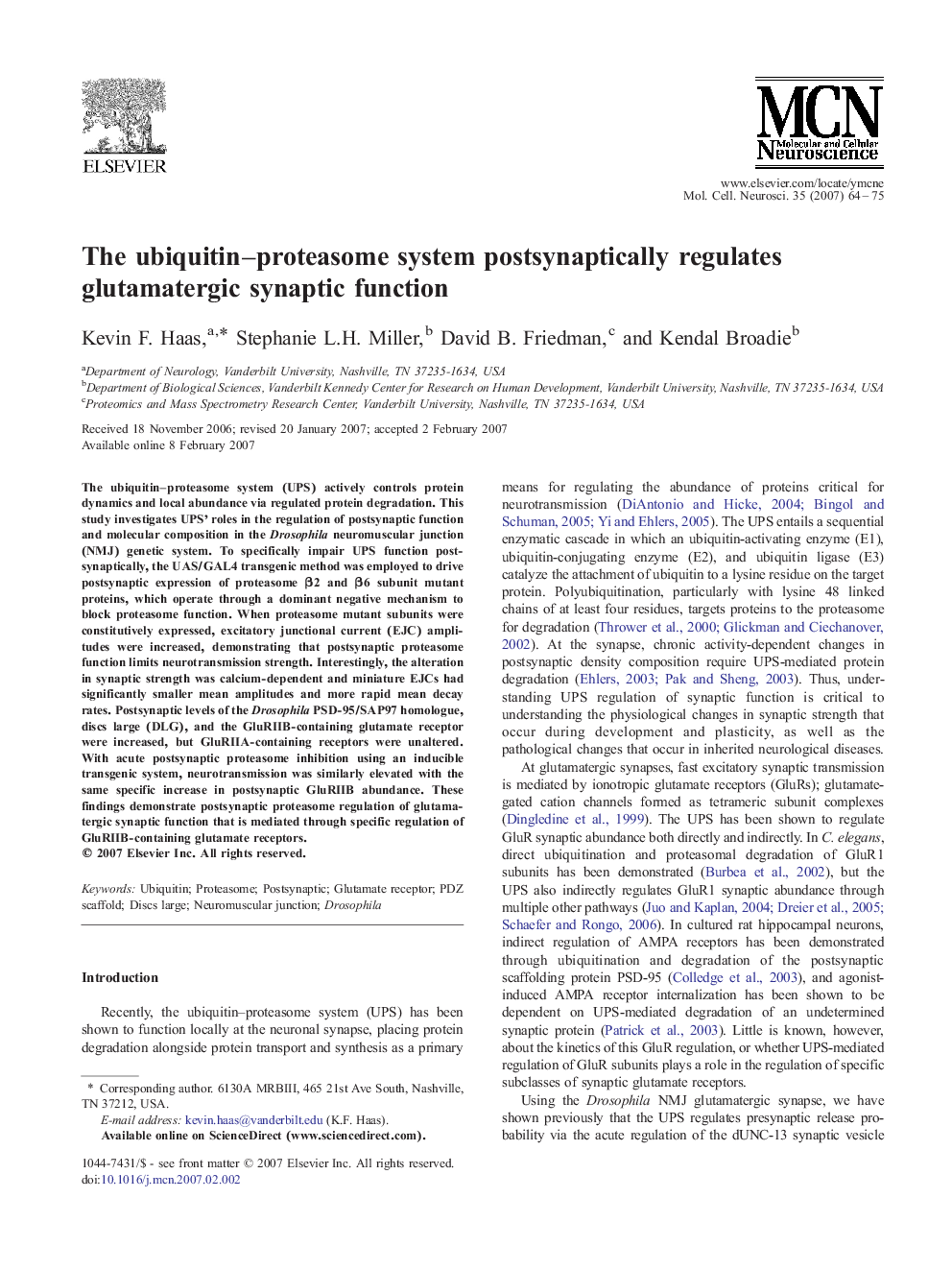| Article ID | Journal | Published Year | Pages | File Type |
|---|---|---|---|---|
| 2199466 | Molecular and Cellular Neuroscience | 2007 | 12 Pages |
The ubiquitin–proteasome system (UPS) actively controls protein dynamics and local abundance via regulated protein degradation. This study investigates UPS' roles in the regulation of postsynaptic function and molecular composition in the Drosophila neuromuscular junction (NMJ) genetic system. To specifically impair UPS function postsynaptically, the UAS/GAL4 transgenic method was employed to drive postsynaptic expression of proteasome β2 and β6 subunit mutant proteins, which operate through a dominant negative mechanism to block proteasome function. When proteasome mutant subunits were constitutively expressed, excitatory junctional current (EJC) amplitudes were increased, demonstrating that postsynaptic proteasome function limits neurotransmission strength. Interestingly, the alteration in synaptic strength was calcium-dependent and miniature EJCs had significantly smaller mean amplitudes and more rapid mean decay rates. Postsynaptic levels of the Drosophila PSD-95/SAP97 homologue, discs large (DLG), and the GluRIIB-containing glutamate receptor were increased, but GluRIIA-containing receptors were unaltered. With acute postsynaptic proteasome inhibition using an inducible transgenic system, neurotransmission was similarly elevated with the same specific increase in postsynaptic GluRIIB abundance. These findings demonstrate postsynaptic proteasome regulation of glutamatergic synaptic function that is mediated through specific regulation of GluRIIB-containing glutamate receptors.
